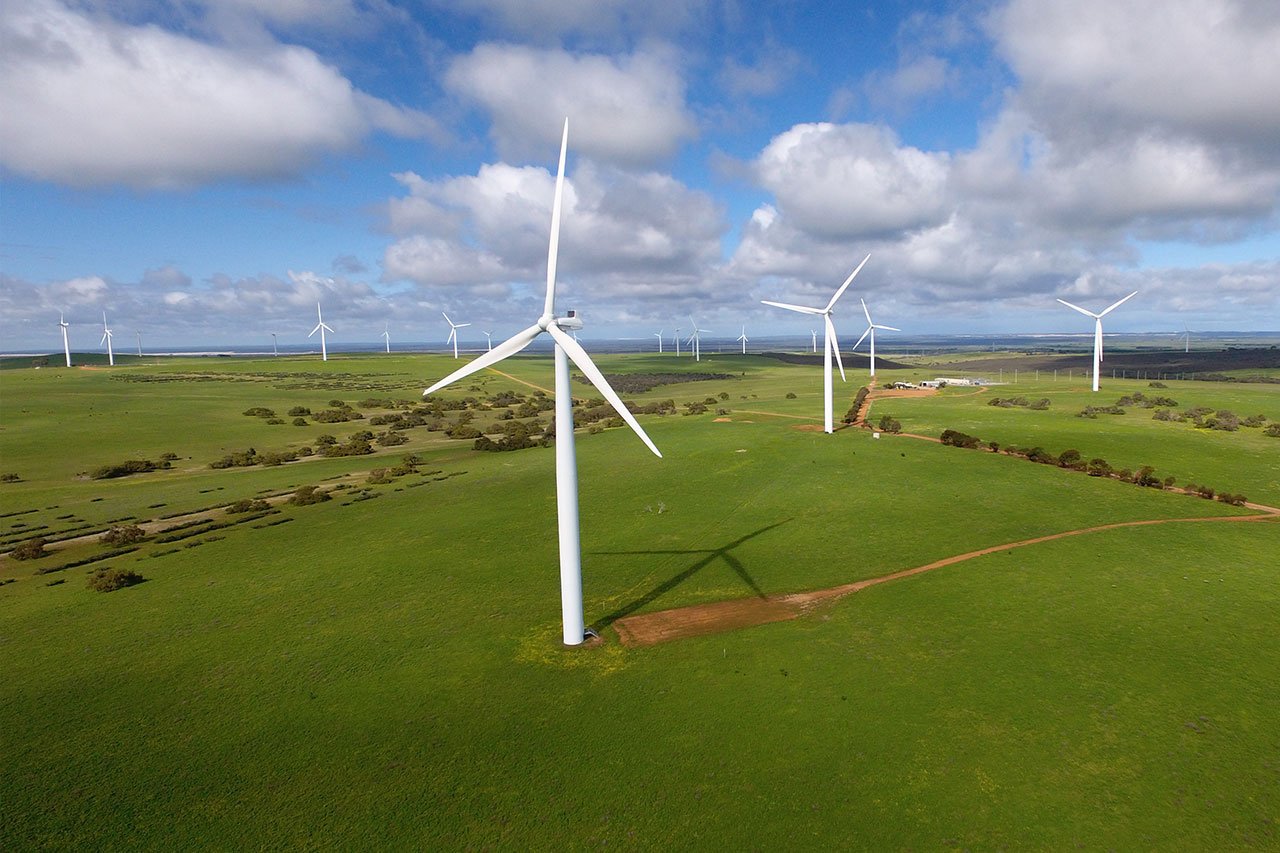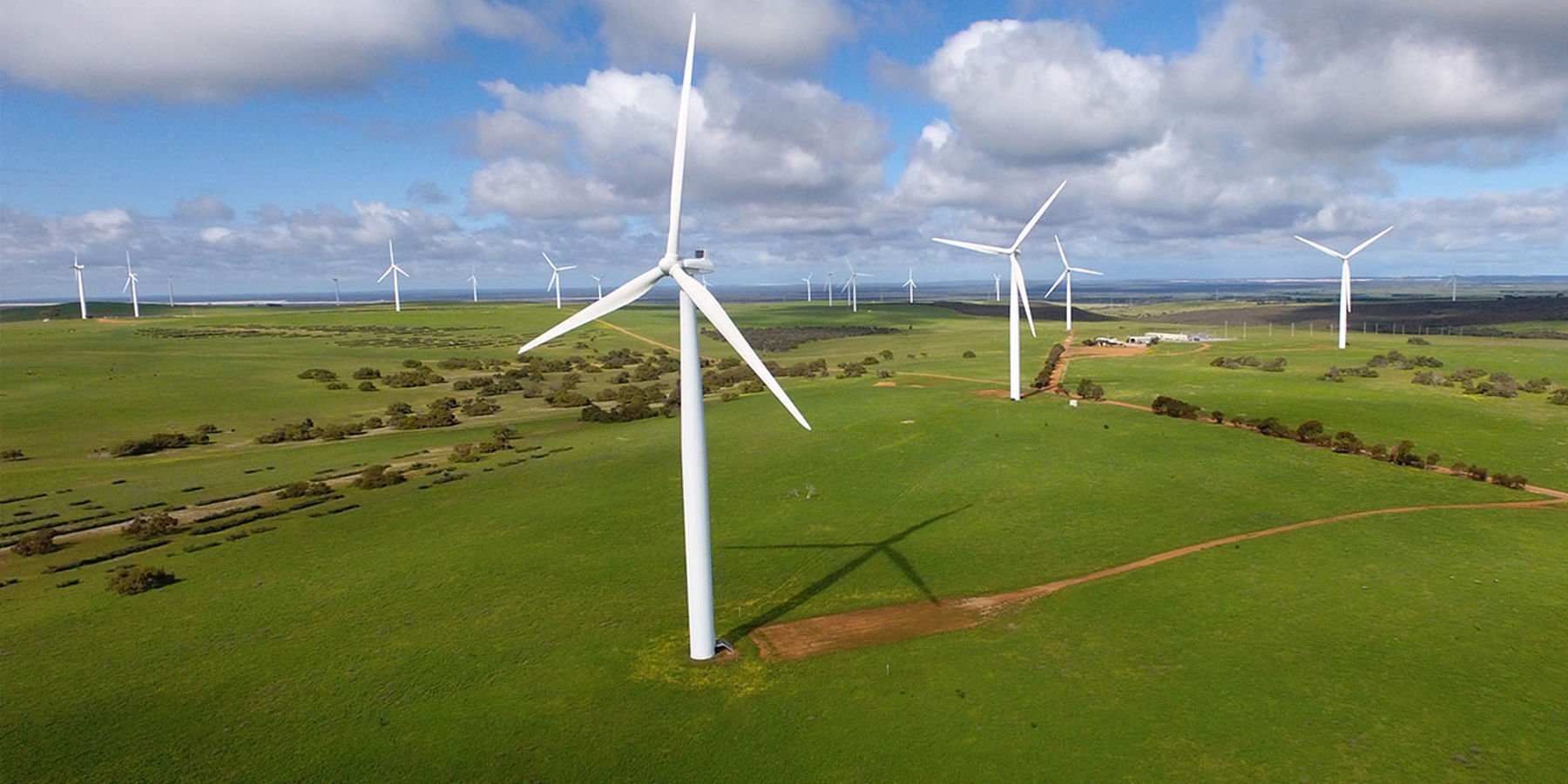Alternative energy sources
There are numerous alternative energy sources that help to power our lives.These provide clean and affordable energy to households all across WA. They are part of a global shift away from fossil fuels and towards more sustainable energy sources.
Exploring alternative energy sources
For many years, the network relied on coal-powered generators to deliver electricity across WA, a method dictated by past technological constraints. Today, the landscape has changed, and we're embracing a mix of cleaner energy solutions as sustainable alternatives.
Alternative energy sources have the potential to generate clean energy that’s more efficient, reliable and sustainable than traditional methods. With the evolution of the energy sector, we too have moved our attention to future-focused energy solutions.
Clean energy, harnessed from the abundant and renewable natural resources of WA, marks a pivotal shift towards sustainability. Clean energy sources include things like sunlight, wind, water, tides, waves and geothermal heat. This is in stark contrast to traditional fossil fuel sources that are finite and produce a lot of harmful waste.
The most recent Clean Energy Council Report shows the extent of the uptake in renewables for 2017 in Australia.
Some key takeaways include:
- more than 1100MW of rooftop solar power capacity was installed, eclipsing the previous best in 2012
- wind and hydro generation contributed the highest renewable energy, hydro at 33.9% and wind at 33.8%, with solar coming in next at 22.6% overall, renewables fell slightly from 17.3% of Australia’s electricity in 2016 to 17% in 2017, largely due to a decline in hydro generation as a result of reduced rainfall.
There’s more growth in renewables on the horizon, with more than 50 large-scale wind and solar projects currently planned within the next year. This represents more than 5300MW of new generating capacity and will lead to over 5,700 new jobs.
So what does a future with less coal stations look like? Let’s take a look at the alternative energy options powering our grid now and tomorrow.
Wind power
Wind power utilises blades on a turbine to harness the natural power of the wind. These blades are connected to a hub which links to a generator. As the wind blows, the blades rotate and the energy produced by this drives the generator. Due to wind strength being greater at high altitudes, taller turbines tend to be more productive. Energy created by wind is estimated at just about five cents per Kilowatt hour.
WA is home to several wind farms. Perth is the third windiest capital in the world, underscoring Western Australia's significant potential for harnessing wind energy. We have already been involved in several wind farm projects to connect this renewable energy to the grid.

Wave energy
Wave energy harnesses power from the ocean’s waves. When waves are approaching the shoreline, they can push air up and down large pipes. The force of the air pushes the blades of the turbines, causing them to turn. This turning generates energy and the generator attached to the turbines uses it to create electricity.
WA’s means it is an effective candidate for wave energy. This is great news, since wave energy is a valuable contributor to meeting clean energy targets. The Commonwealth Science and Industrial Research Organisation believes wave energy could contribute up to 11% of Australia’s energy by 2050.
We’ve connected the world’s first ever wave energy integrated microgrid to the network, just off Perth at Garden Island, for Carnegie Clean Energy. This pioneering project integrates wave buoys, solar panels, batteries, and a diesel generator, presenting a comprehensive clean energy solution poised to revolutionize power delivery to coastal areas.
Solar power
Solar energy works by converting sunlight into electricity through the use of photovoltaic cells. These are contained within solar panels. The flow of electricity from the solar panels is then managed by a solar inverter, which converts the electricity into a format that can be used for appliances or stored in solar batteries.
With Australia, and especially WA, receiving more sunlight than most places in the world, our region stands in a prime position to harness the power of solar energy. In fact, we have more solar coverage per square metre than anywhere else in the world, creating ideal conditions for large-scale solar farms and domestic rooftop solar. The largest solar farm in WA is at Emu Downs, with 75,000 photovoltaic panels.
According to the Clean Energy Council, large-scale solar capacity has grown twelve-fold over four years. Solar farms which feed into the grid are usually developed in rural areas. Their panels will cover between one and a hundred acres of land. This is especially helpful for making the network more reliable in these areas.
At Western Power, we make it possible for businesses and homes to connect their solar systems to the grid. But we are also harnessing solar technology through stand-alone power systems. These may one day provide an alternative power source for regional customers. Sharing energy with your neighbours through a solar-powered microgrid could soon become the way of the future.
Hydro energy
Hydro energy converts the kinetic force of moving water into electricity. The pressure of water spins propellers within a turbine. The energy generated is converted into electricity, much like wind energy. Hydroelectric power stations use water from dams to create energy. The amount of electricity being generated depends on the volume and the height of the water falling. Hydro energy is known as one of the oldest forms of renewable power.
Biomass energy
Biomass creates energy through the burning of organic materials like plant material, animal waste or by-products. These materials contain stored chemical energy that can be released when burned. They may also be converted to liquid fuels through certain processes. Despite creating carbon emission as a by-product, this is classified as a form of renewable energy because plants and animals can be replaced.
Other forms of energy
There are also a range of other clean energy sources in the South West Interconnected System. These include gas turbines, thermal power stations, geothermal energy and large-scale batteries. They offer a greater number of options for affordable and clean energy to help reach our state’s sustainability goals.
Gas turbine power stations and thermal power stations generate energy through gas combustion. Gas turbine power stations use the combustion of gas to turn turbines, which subsequently turn other turbines to generate more electricity. Thermal power stations use gas combustion to power steam turbines. The thermal energy from the gas combustion causes a reservoir of water to evaporate into steam which pushes the blades of the turbine, generating energy. The steam then condenses back into water to keep the process going.
Geothermal energy utilises the heat contained within the earth to convert water to steam. The high temperature allows them to function in a similar way to thermal power stations. Geothermal energy is being explored across Australia as a potential renewable source.
Energy storage options, such as large-scale batteries, are a way to store electricity from clean energy sources. Due to the cost of these battery systems becoming more affordable, we are exploring them as an option. They are especially beneficial during peak times, when demand normally outweighs supply, since they can store energy generated at other times to be used when it’s most needed. Large-scale batteries also help to make the power grid more reliable by supporting regional reliability issues.
These innovations are set to redefine energy consumption across the network, offering you more control over your energy use, as we journey together towards a cleaner, more sustainable future. Embracing new technologies and renewable energy sources is key to a sustainable and reliable energy future for WA.
Innovative energy solutions
Learn more about our energy solutions and projects.
